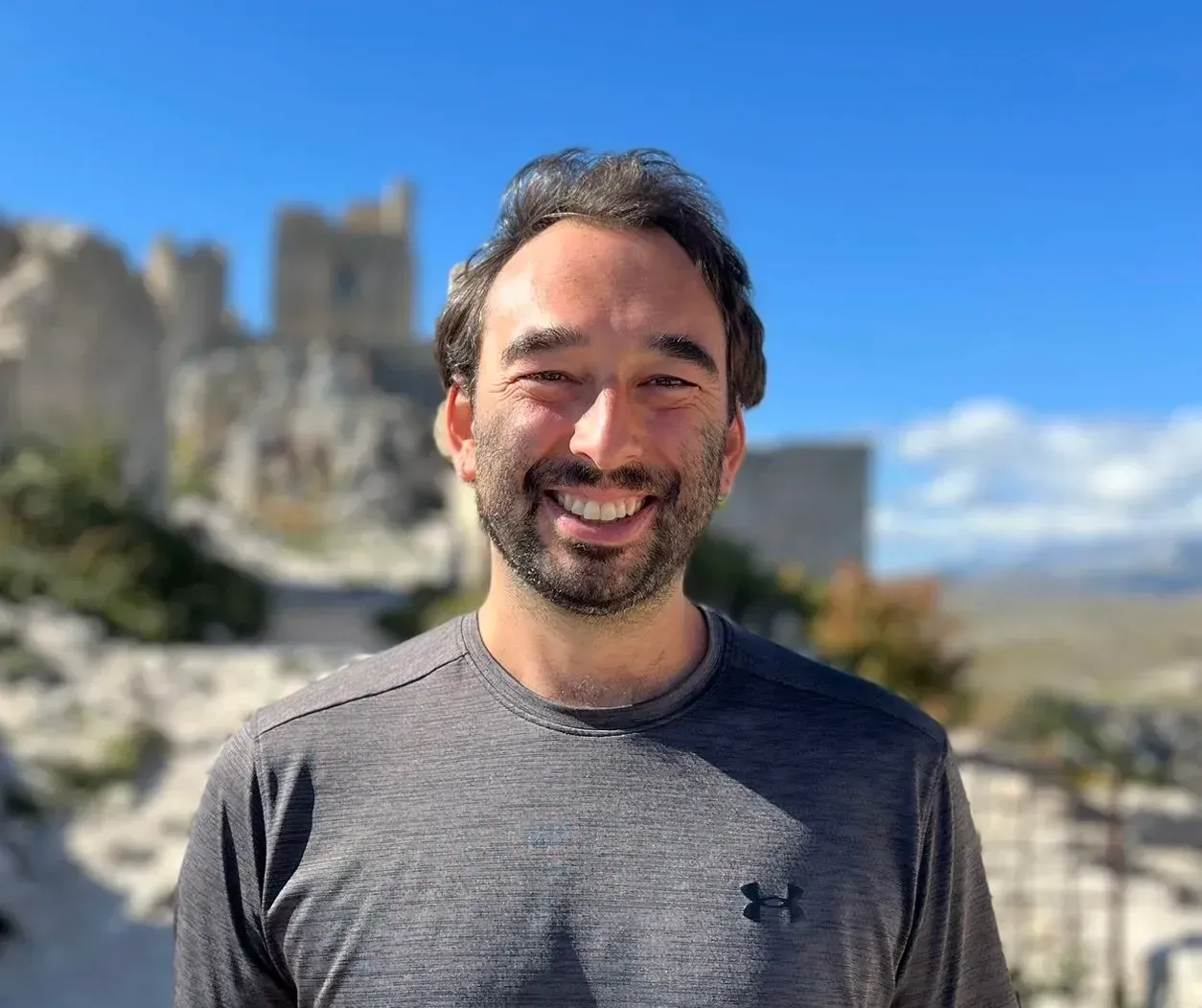
.webp)

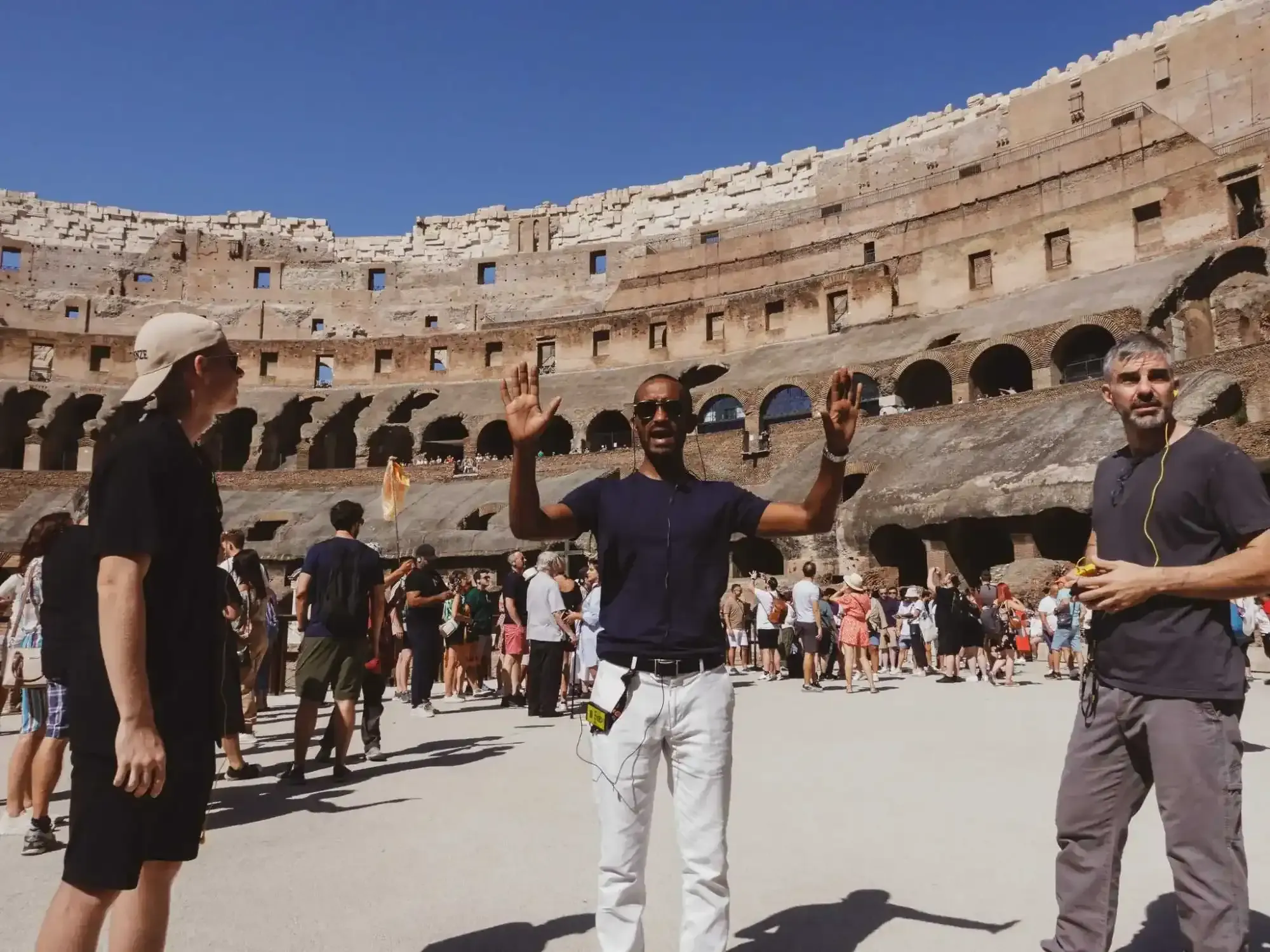
Climb Rome's Seven Hills, walk its cobbles and orientate your way through its winding streets and you'll be amazed by how many famous (and infamous) characters from Roman history you'll encounter along the way. This guide to the most famous statues in Rome brings you face-to-face with these historical and mythical figures, nourishing you with knowledge while introducing you to Rome's lesser-known spots.
There are simply too many statues in Rome to count. Historically, thousands of statues have lined Rome's buildings and streets. The Roman Forum was decorated with sculptures of gods and emperors inside temples, palaces, lining porticoes and scattered throughout the Roman and Imperial forums and Campus Martius. Some of these were ancient Roman sculptures, others Greek brought to Rome as the empire expanded, and as time went on the collection grew. Today you will find museums lined with sculptures, sculptures in squares and parks and even along busy streets.
Two of the largest collections of sculpture in the city are at the Capitoline Museums and the Vatican Museums. There are rooms and hallways lined with hundreds of sculptures from throughout the history of Rome. There are so many that it’s impossible to see them all in one trip — at least if you want to keep the soles of your shoes and your sanity. But our guide to sculpture in Rome will highlight some of the most important and accessible examples.
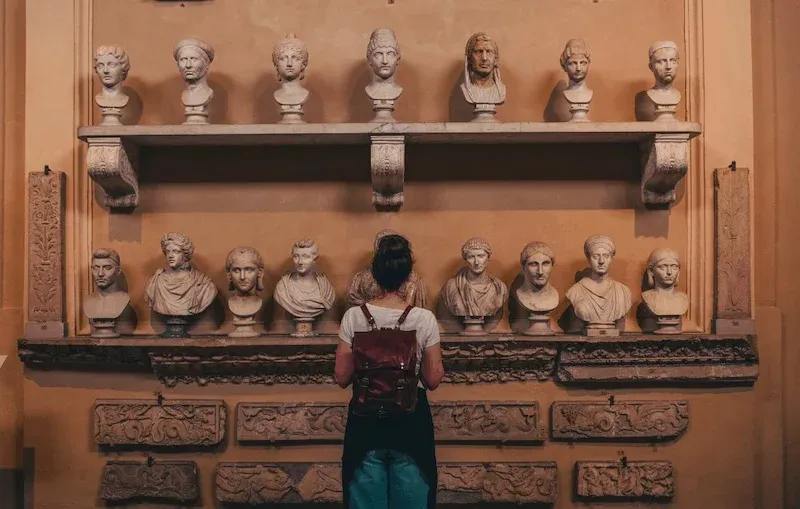
Ancient busts in the Vatican Museums
In the centre of Rome on top of the Capitoline Hill lies the 16th century square known as the Campidoglio. Designed by Michelangelo, the square itself contains 5 examples of ancient Rome sculptures, and inside the museums on either side of the square are countless others. The sculptures in the square:
These river gods are lounging in front of the Palazzo Senatorio with their symbols to show the viewer which river they represent. The Nile rests on a sphinx while the Tiber rests his arm on the Roman she-wolf suckling Romulus and Remus.
.webp)
Statue of the River God Tiber in the Piazza of the Capitoline Hill
In the centre of the rivers is the Dea Roma (Goddess Roma) also known as Minerva, goddess of wisdom and war, similar to the Greek goddess Athena.
To the left of the Palazzo Senatorio just around the corner is a copy of the Lupa Capitolina, as she is known in Italian. The original is in the Capitoline Museums and dates back to the 5th century BCE. Under the she-wolf are the twins Romulus and Remus, the legendary founders of Rome.
The equestrian statue in the centre of the piazza is a copy of the original inside the Capitoline Museums. There is a tale regarding this sculpture that while the Catholic church was melting down the bronze pagan sculptures from ancient Rome they saved this one thinking that it was Constantine, the emperor who made Christianity the official religion of the Roman Empire in the 4th century CE.
However, the Christians got it wrong since this is actually a statue of Marcus Aurelius, one of the emperors who was known to persecute Christians during his reign.
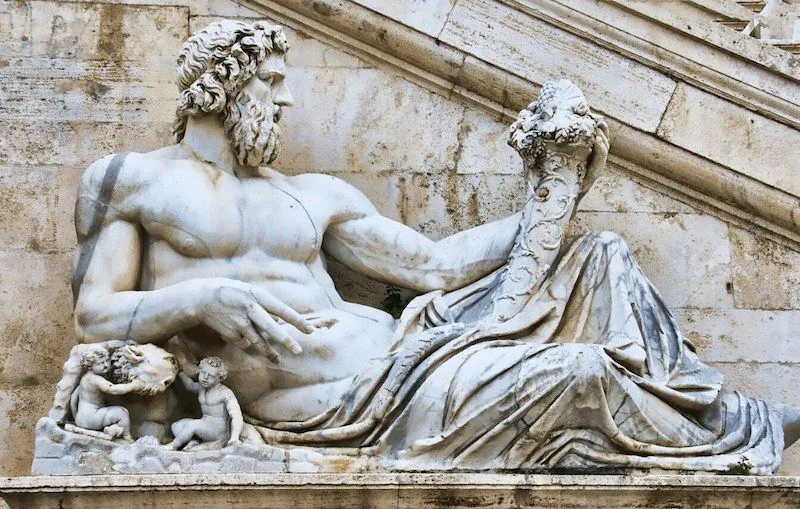
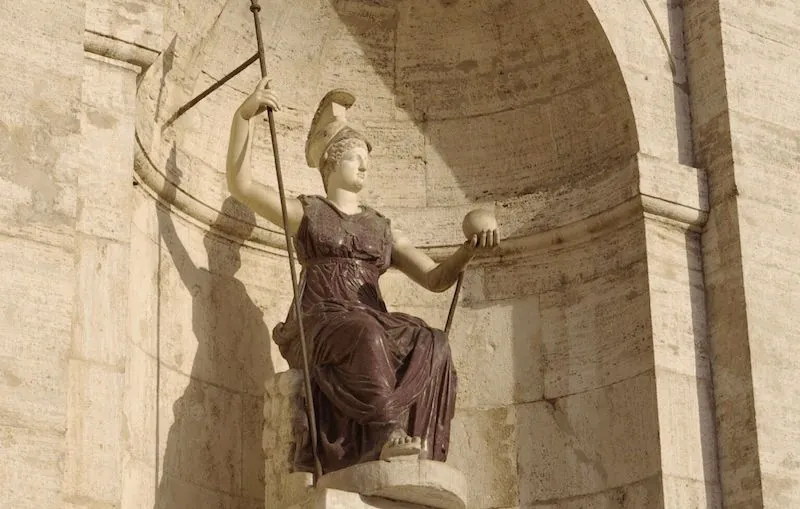
.webp)
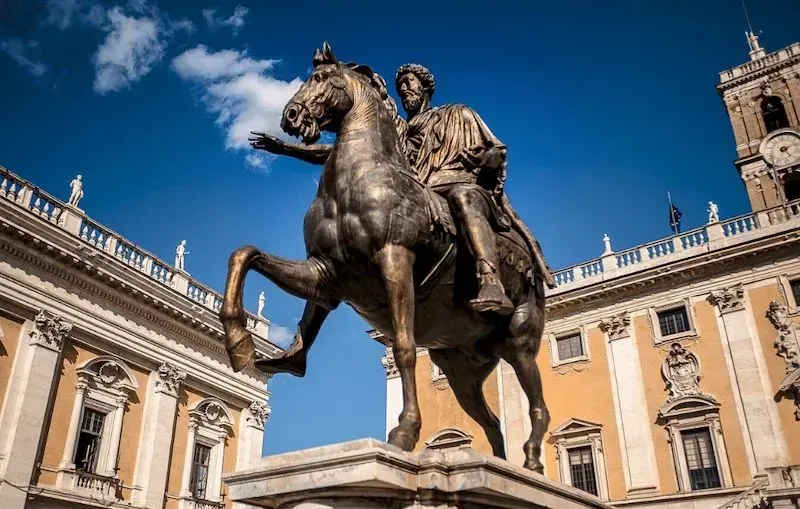
Statues outside and within the Capitoline Museums
The Capitoline Museums are full of sculptures from ancient Rome that can be viewed for a low-priced ticket (€18.50). A few noteworthy sculptures to see are the Dying Gaul, the colossal statue of Constantine (reconstructed in 2024), and the originals of the sculptures described above.
On the other side of town in the Vatican City are the Vatican Museums. These museums boast the most extensive collection of art and artefacts in the world, with sculptures lining the walls of rooms and hallways throughout the complex. Some of the pieces to take special note of are the Belvedere Torso, the sculpture of the emperor Augustus and the giant bronze statue of Hercules, an excellent example of a Roman god statue which lies in the room with Nero’s giant porphyry bath.
Most of the sculptures from the ancient Roman Forum are no longer there, with many ending up in the Capitoline and Vatican Museums. Some copies are there for visitors to see. In the House of the Vestals in the centre of the forum, visitors can enter the atrium of the Vestal Virgins and see the beautiful statues depicting the priestesses who once lived here.
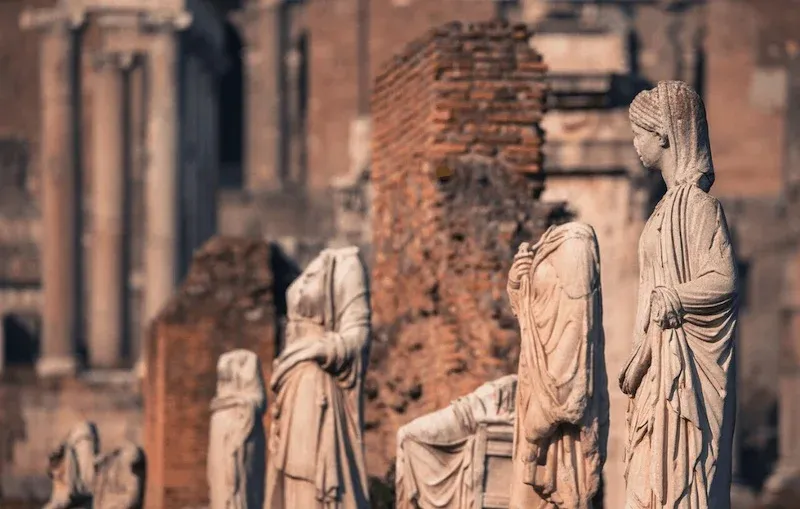
House of Vestals Roman Forum | Famous Statues in Rome
While the Renaissance was happening in Florence, Rome was getting in on some of the action with their own Renaissance a bit further south. Unfortunately, we don’t find quite as many examples of Renaissance sculpture in Rome as we do painting, but what is here is well worth visiting. The great master Michelangelo sculpted two of his most beautiful works here in Rome.
Located in the Basilica of St. Peter in the Vatican City, this is one of Michelangelo’s most beautiful sculptures. Although he was only 23 years old when he began cutting the marble for this work, it remains one of Michelangelo's undisputed masterpieces and the only sculpture the artist ever signed.
-1.webp)
Michelangelo’s early work, the Pieta, is among the Great Master’s most famous statues in Rome
Most commonly known as the Horned Moses by Michelangelo, the Tomb of Pope Julius II was begun in 1505, but it was not until long after the Pope passed away that the tomb was finally completed in 1545 on a scale much less grand than the original designs. It is said that Michelangelo buffed the sculpture of Moses so much that the marble began to take on a transparent glow. Michelangelo was so proud of his Moses and its life-like appearance that he’s said to have commanded it to “Speak!”
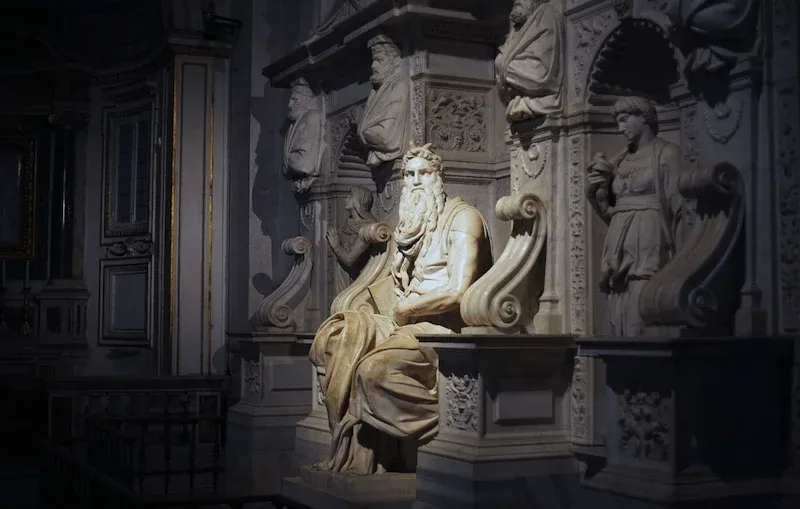
Moses by Michelangelo | Famous Statues in Rome
The Baroque style of art closely followed the Renaissance, adding more realism and emotion to paintings and sculptures. One of the masters of the Baroque era was Gian Lorenzo Bernini, and you can see his work all throughout Rome and the Vatican City.
Found in a chapel in the church of Santa Maria della Vittoria on the northeast side of the city near Termini Station, this is one of my personal favourites. Sculpted in 1652, this stunning sculpture represents the moment when St Theresa is caught up in a moment of “religious ecstasy.” Such an erotic moment depicting a religious scene sets this sculpture apart from the rest.
For art lovers, or just those who want to take in as much Roman art culture as they can, the Borghese Gallery is one of the very best museums in the city. Located in the lush green park of Villa Borghese, which resembles Central Park in NYC, the Borghese Gallery is one of Rome's most stunning galleries. Visitors must book tickets in advance (€13) to secure a timed entry and should consider exploring the park as well as the gallery. Of the many Bernini sculptures in this gallery, the three you must not miss are:
Bernini beautifully captures this Greek myth about a girl running from the sexual advances of the god Apollo. When she begs the gods to help her, she is turned into a laurel tree just as Apollo catches up with her.
Read more about Bernini's Apollo and Daphne.
Here is another example of mythology, this time Roman, where a god takes what he wants. Pluto, the God of the underworld, takes the young maiden down to Hades with him. He is depicted here with his dog Cerberus who guards the entrance to hell. Pay particular attention to where Pluto’s hand and fingers dig into Proserpina’s thigh, the realism and sculpting of the marble is truly remarkable.
Inspired by the Old Testament story of David and Goliath, this is one of the only sculptures of this subject matter that is actually in motion. Most other sculptures of David are standing still, stoic, proud in victory after having slain the giant. But Bernini’s David depicts the moment that the boy is winding up his slingshot and about to let it loose to strike Goliath down.
.webp)
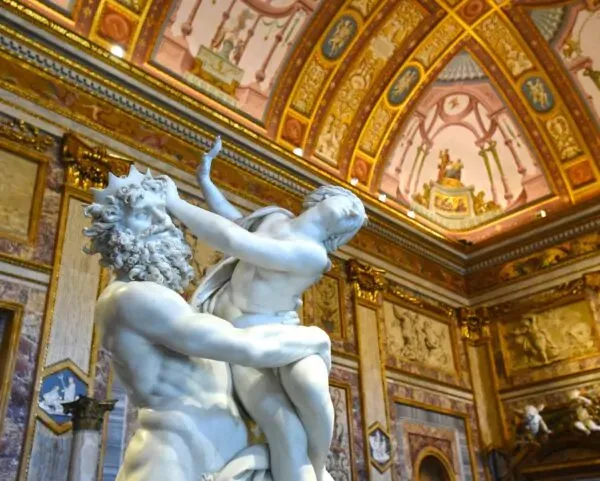
-1.webp)
Famous Statues in Rome inside the Borghese Gallery
This bridge connecting the old city centre to Hadrian’s mausoleum, now known as Castel Sant’Angelo, is decorated with 10 beautiful angels that were sculpted by Bernini and his workshop.
Each of the angels holds an object from the Passion of the Christ, including the Spear of Longinus, the crown of thorns and the cross to which Christ was nailed. Only two of the angels were carved by Bernini himself (one holds the crown of thorns, the other the plaque with INRI “King of the Jews”) and are now kept in the church of Sant’Andrea delle Fratte.
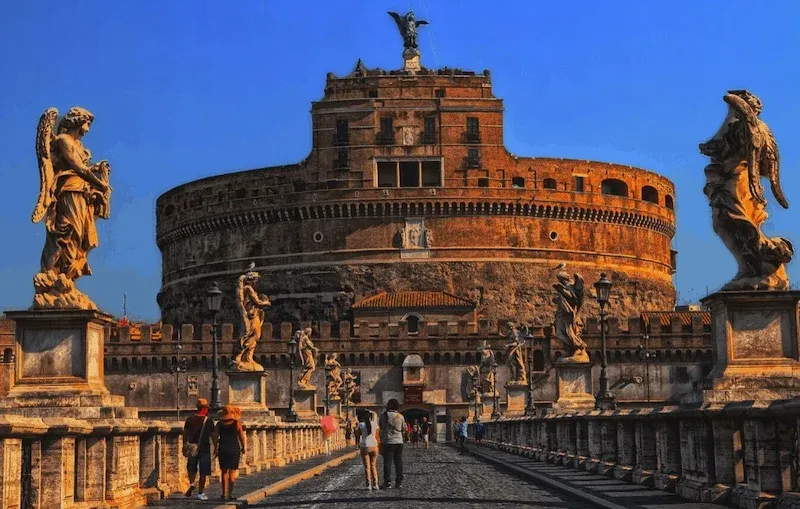
Ponte Sant’Angelo (Bridge of the Angels) | Famous Statues in Rome
In the 19th century, a group of military leaders fought hard to bring the separate governments in the various regions on the peninsula of Italy together under one flag. By 1861 they had succeeded in unifying the entire country (except Rome, which was defended by the Pope's army). Yet nine years later, the Pope had been defeated and Rome was brought into the unification.
Following the Unification of Italy (the Risorgimento, as it is known in Italy), the Italian government began erecting statues and monuments to commemorate the battles and the heroes who fought to unite Italy.
The Altar of the Fatherland is the largest monument in Rome and one of the most popular with people on holiday. Constructed between 1885 and 1925, it sits in Piazza Venezia at the base of the Capitoline Hill and can’t be missed, not because you should make an effort to see it, but because it is so huge, and white and elaborate that you can’t help but see it towering above the rest of the buildings in the city.
-1.webp)
The Vittoriano (Altar of the Fatherland) is home to some of the most famous statues in Rome
Sitting in the very centre of the front of the monument is an enormous sculpture of Italy’s first king Vittorio Emanuele II. This sculpture is so large that during the inauguration of the monument they hosted a banquet in the belly of the horse!
This road runs from Piazza Venezia to the Colosseum and was constructed in 1932 by Benito Mussolini. In constructing this road, Mussolini destroyed parts of five ancient forums that border it today (the forums of Caesar, Augustus, Vespasian, Trajan and Nerva). As recompense for this, Mussolini had bronze sculptures of these men placed in the vicinity of the forums that bear their names.
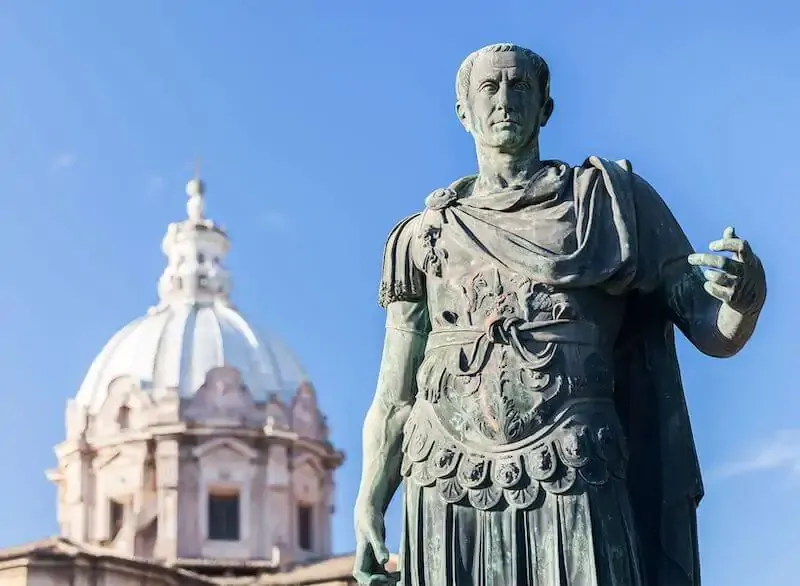
Statue of Julius Caesar outside his Forum on the Via dei Fori Imperiali in Rome.
The eagle-eyed among you may wonder why there are only four sculptures but five forums. This is because Mussolini had no idea that the so-called Forum of Peace was in fact Vespasian's Forum, and so failed to erect a statue of him.
Considered the eighth hill of Rome, the Gianicolo ascends above the right bank of the River Tiber and its riverside district of Trastevere. At the top of the hill, beyond the Fountain of the Acqua Paola, there is a spectacular lookout point called the Belvedere del Gianicolo where visitors can view the entire city of Rome. In this square is the large late 19th-century Statue of General Giuseppe Garibaldi who was an integral figure in Italy's struggle for unification.
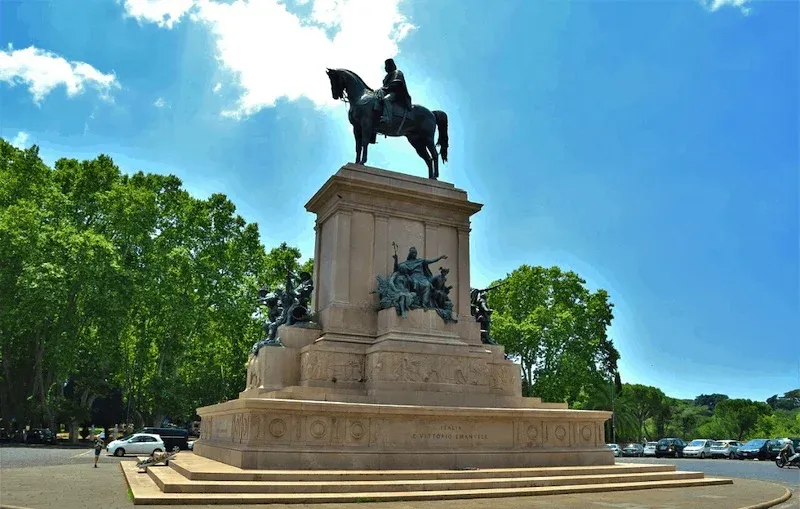
Monument to General Garibaldi on the Janiculum Hill | Famous Statues in Rome
On the way up the hill as you approach the lookout, and in the park beyond the square, there are busts of generals and military figures who were noted for their service in the unification as well.
Most of the sculptures in this guide are so beautifully carved and fortunately well-preserved, that we are lucky to have them as life-like representations of the figures most closely associated with the city. Historical and mythical figures are depicted with such beauty and grace that we are inspired to wander the museums, churches, palaces and squares to seek out their company and learn their stories.
Enjoyed our article about Famous Statues in Rome? Come and see them in real life on one of our Rome tours!

No headings found in content.

Channel your inner-Maximus as you step out onto the Colosseum Arena floor and access this recently reopened area of the world famous amphitheatre. Then, explore the rest of the heart of ancient Rome, with a friendly, expert guide and a small group of like-minded travellers!
Unlike regular tours of the Colosseum, our Colosseum Arena Tour gets you straight inside the ancient amphitheatre and out onto the arena floor through the Gladiator’s Gate. This is the route the gladiators themselves took almost 2,000 years ago. Imagine the moment they left the gates, and were greeted by the cheers and jeers of 50,000 bloodthirsty spectators.
Your expert guide will transport you back in time to the height of the Roman Empire when the Colosseum was constructed. These were times when Rome was ruled by all-powerful emperors (sometimes wise, sometimes wacky), the city was flooded with exotic riches from around the world, and the Colosseum acted as the city’s main stage for showing off the animals and people that Rome had conquered and captured.
After a short 30-minute break, we’ll head off on the next part of the tour…
Next, we’ll climb the Palatine Hill, where the ancient city was founded. The Palatine Hill is a real archaeological wonder, home to settlements from the Iron Age to the 16th century. Gaze upon such sites as the Hut of Romulus, Rome’s legendary founder, and the Imperial Palace, where the emperors in their family engaged in ruling, politicking, and scheming. Get your camera at the ready – you really can’t beat these views!
The final destination on our Colosseum Arena Tour is the Roman Forum. As the beating heart of ancient Rome, the Roman Forum was once a bustling hub of markets, law courts, temples, and more. It was here that Julius Caesar was cremated, where victorious triumphs paraded with the spoils of Roman conquests, here where two disgraced emperors were murdered in 69 AD, and here where Cicero delivered the speeches that shaped western culture for centuries.
When our tour is over, feel free to stay and explore the Roman Forum at your own pace.
Book the complete ancient Roman experience today with our Colosseum Arena Tour!
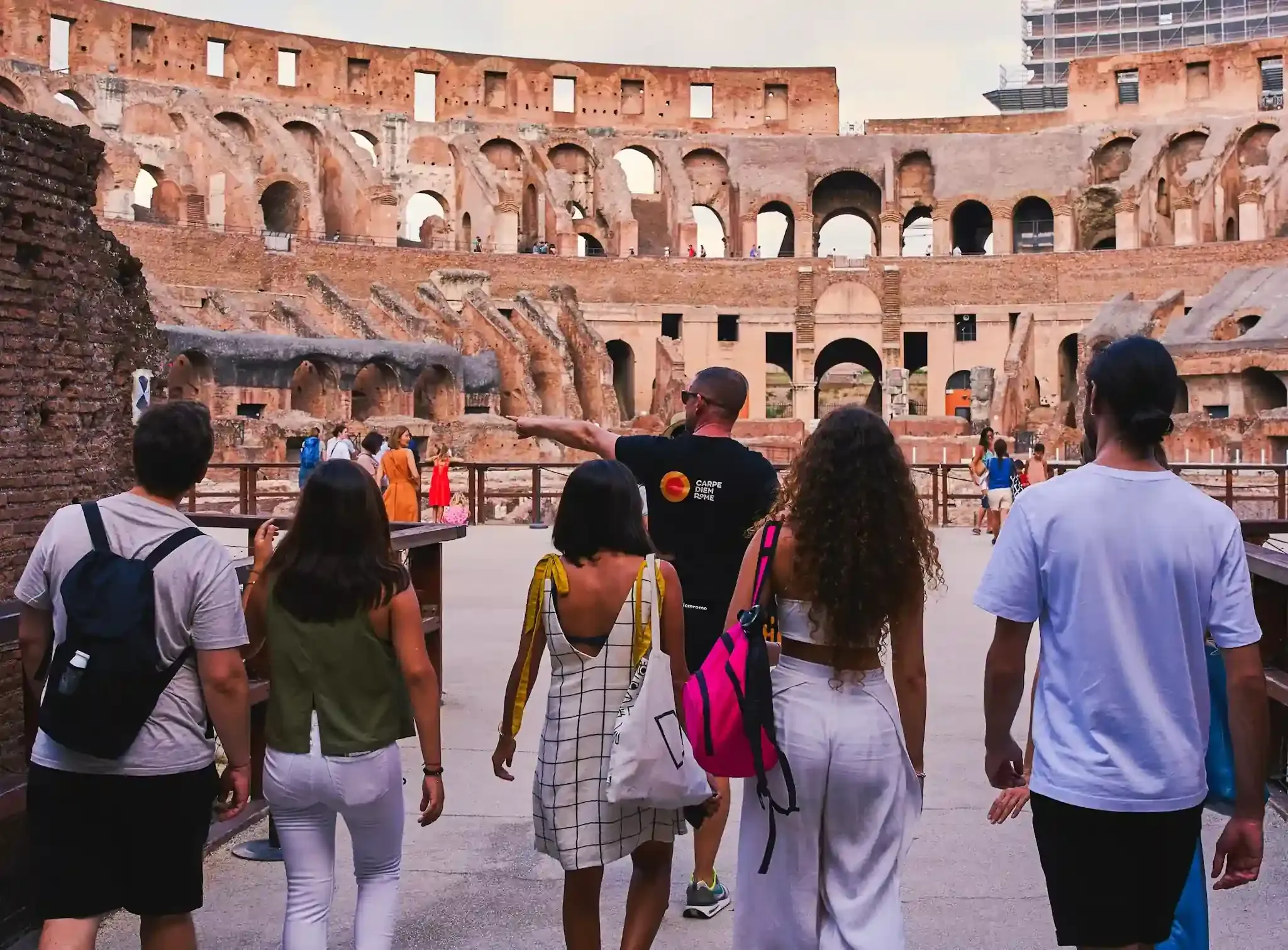
Ready to travel back in time to experience the might of the Roman Empire? Our small-group Colosseum guided tour lets you step straight into ancient Rome, no time machines (or long lines) required. With timed -entry and fast-track access and an expert licensed guide, you’ll breeze past the queues and straight into the jaw-dropping world of emperors, gladiators, and ancient stories that will stick with you forever.
We’ll start our 3-hour adventure at the Colosseum, Rome’s most famous amphitheatre and the site of some of the most bloody public spectacles in history. Your guide will reveal the story and secrets behind this impressive monument and provide answers to your burning questions:
The answers might surprise you, but not more than the exclusive above-the-arena views that offer a new perspective of the Eternal City.
After your immersive Colosseum tour, we’ll ascend Palatine Hill, Rome's legendary birthplace. It was here that Romulus founded his city, after murdering his brother Remus, and here where the rich and famous of the Roman Republic had their homes. During the time of the Roman Empire, the Palatine Hill was the site of the emperor's palace, royal intrigue, and some of the city's best panoramic views. This is where myths met marble, and emperors ruled with an iron fist.
Then we will head down into the Roman Forum, once the buzzing hub of Roman public life. We’ll wander through the ruins of ancient temples, triumphal arches, and the political stages that shaped the Roman Empire, all brought to life through the expert storytelling of your licensed guide.
With the comfort of a small group, a well-paced itinerary, and the best value for money of any Colosseum tour, this isn’t just a tour, it’s a once-in-a-lifetime experience through the rise (and fall) of ancient Rome. Spots fill fast, so grab yours and make your Roman holiday legendary.
Travelling with 6 or fewer people? We recommend upgrading to our semi-private tour of Ancient Rome for a more personalised experience. With this semi-private Colosseum tour, you can explore at a more relaxed pace, enjoy a more intimate experience with the people you care about most, and experience the personalised attention of a guide who can answer all of your burning questions.
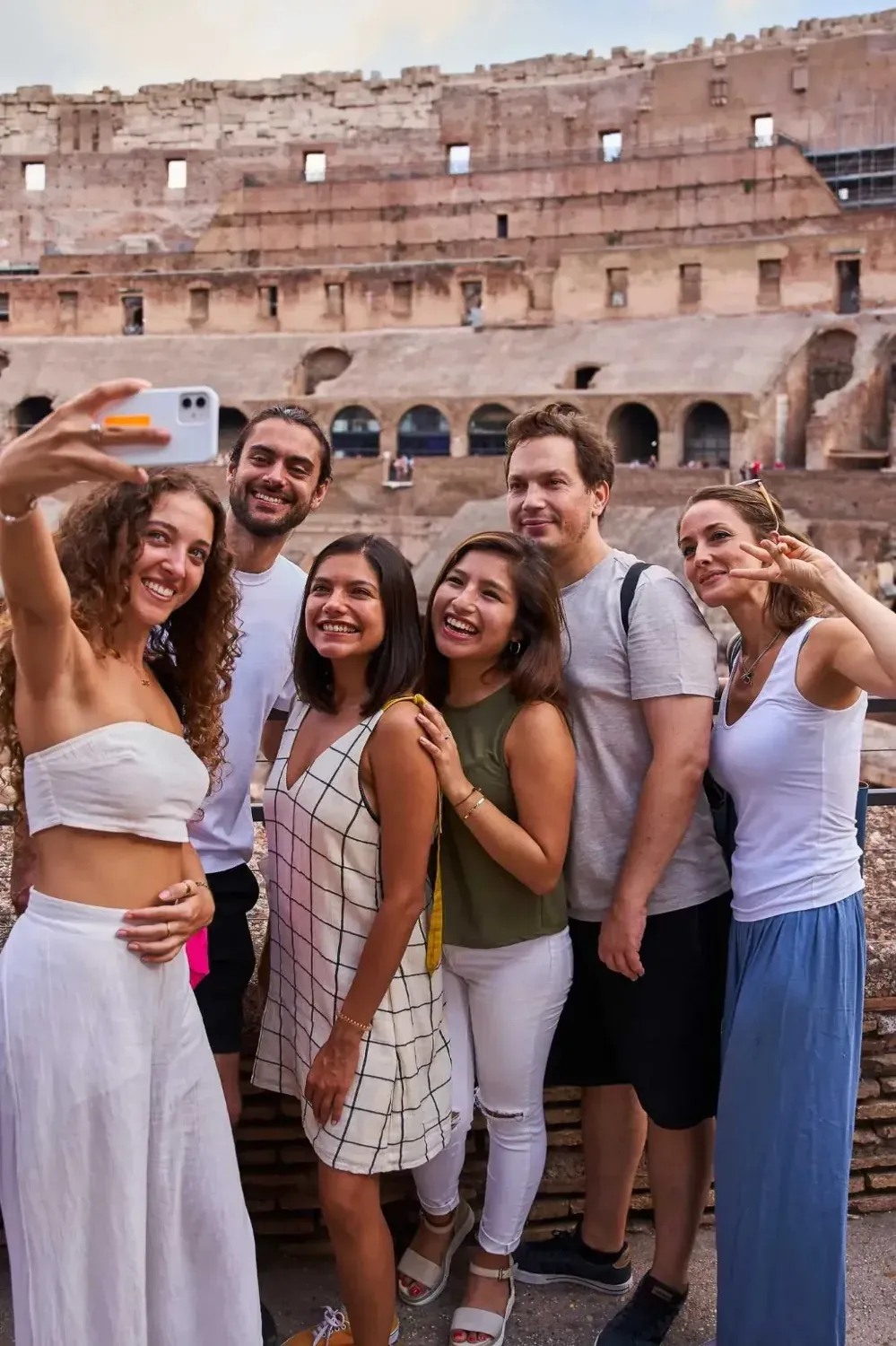
Go back in time on a once-in-a-lifetime, semi-private exploration of Ancient Rome’s most legendary landmarks—the Colosseum, Palatine Hill, and Roman Forum.
Designed for comfort and connection, this semi-private tour is limited to just 6 guests, giving you more one-on-one time with your expert guide, a relaxed pace, and the opportunity to dive deeper into the stories that fascinate you most.
With priority, fast-track access, you’ll also glide past the crowds and straight into the heart of the Eternal City. Save time, avoid the stress, and make the most of every moment with the people who matter most to you.
Your 3-hour journey begins inside the iconic Colosseum. We’ll take in the breathtaking views from above the arena that most visitors miss. Here, you’ll stand where gladiators once battled and hear captivating tales of emperors, epic contests, and ancient innovation. With fewer people in your group, your guide can personalise the experience, answering your most burning questions and focusing on what interests your group.
Next, we’ll ascend the legendary Palatine Hill, the mythical birthplace of Rome and site of the Empire’s most extravagant palaces. Then, descend into the Roman Forum, once the bustling centre of Roman public life. As you walk through the ruins of temples, arches, and political buildings, your guide will bring the ancient world to life.
This isn’t just a tour, it’s a meaningful journey into history, crafted for curious travellers seeking a deeper, more intimate Roman experience.
Prepare for a unique, unforgettable journey through Rome’s most famous landmarks with a small, friendly group that lets you explore at your own pace.
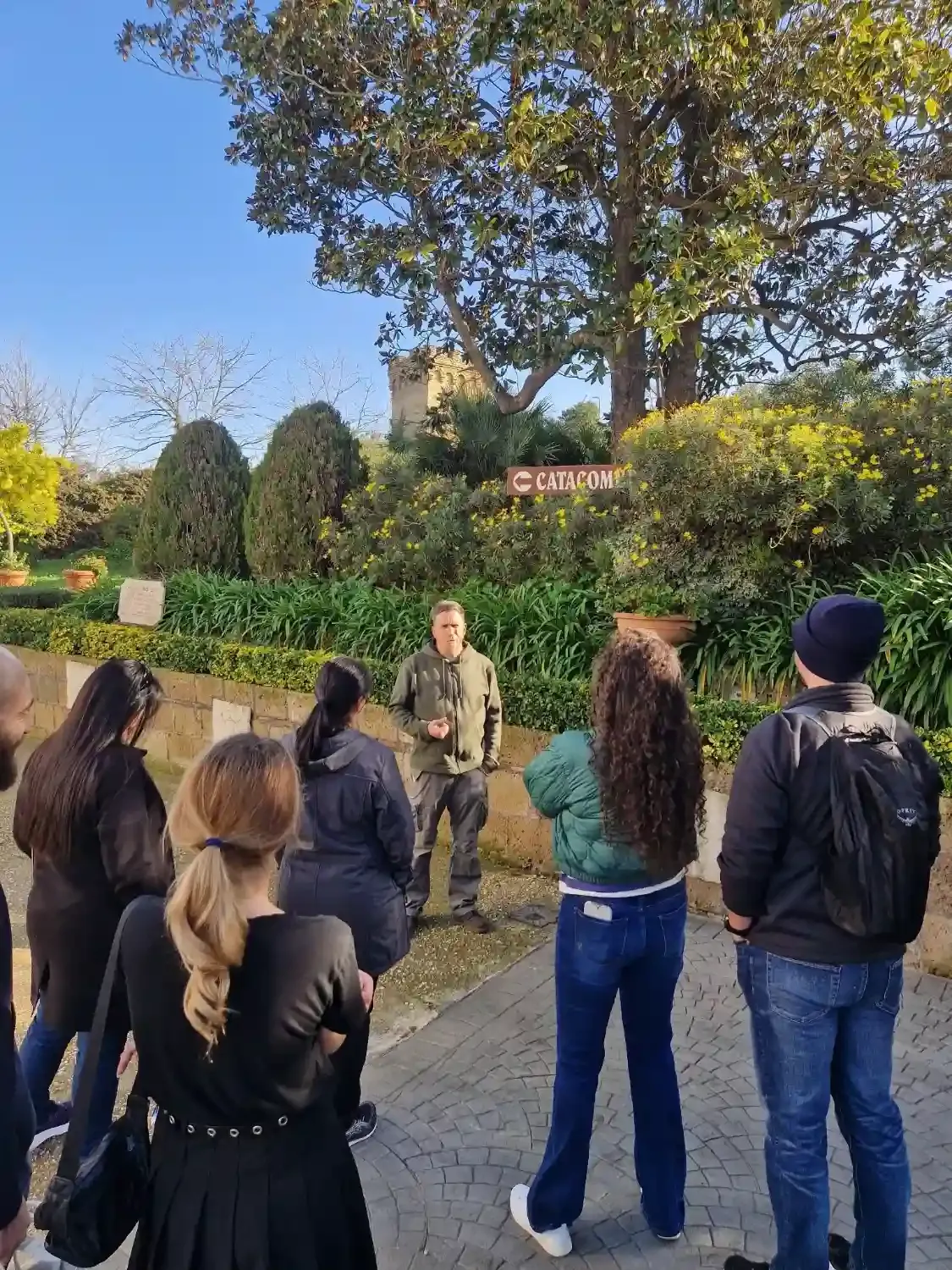
The best way to understand Rome is to take a look beneath it. Our Rome Catacombs Tour is perfect for travellers who want to get off the beaten track, unearth underground passageways, and discover the secrets of the largest catacombs in Rome.
Prepare to discover the deeper, darker, and more mysterious parts of Roman history with a small group of like-minded adventurers. By digging downwards into the ancient labyrinth of tunnels, we’ll uncover all the secrets and dark tales of the catacombs of Domitilla.
Your friendly expert guide will meet you outside and give you a quick overview of the tour before we make our descent. With our close guidance, you’ll have the chance to explore and discover ancient passageways in the largest, most famous catacombs in Rome. These tunnels are sacred and an integral part of the Christian and Roman faiths. Learn how ancient Christian rites and rituals were held underneath the bustling city streets.
These tunnels were not only a place of ritual, but are still a sacred place of rest for more than 150,000 bodies. These catacombs and the bodies they hold stretch for almost 20 km underground, some of which is yet to be seen by the public eye.
With a maximum of ten travellers per tour group, you’ll have the opportunity to ask plenty of questions. The price of the tour includes the tickets. If you’d like to join us on our Rome Catacombs Tour of the darkest, largest catacombs in Rome, book your spot now to make sure you don’t miss out!

Tired of big-group tours that move from one attraction to the other before you’ve even had the chance to understand what your seeing?
This is the Vatican Tour for you.
Our VIP Vatican tour offers a more personal, intimate experience that doesn’t compromise on anything. See it all, learn it all, and feel it all.
With a maximum group size of 12, you can guarantee you’ll have more than enough time and privacy to soak up the stunning artworks and fascinating history of the Vatican City.
Our tour starts at the Vatican Museums, where more than four millennia’s rich history resides. Worried about getting lost in the labyrinth of corridors and galleries? Don’t be. Gain real-world insight into the stunning wonders of the museum’s 1000+ rooms thanks to the help of your friendly, expert guide. They’ll be excited to answer as many questions that you could possibly come up with, so feel free to ask away.
Afterwards, we’ll head over to the Pope’s private place of prayer, the Sistine Chapel. Home to two of Michelangelo’s masterpieces, The Last Judgement and its famous ceiling, the Sistine Chapel is just as awe-inspiring today as when it was unveiled in the 1500s. Marvel at world famous frescoes and discover how Popes are elected, here in this very room.
Our VIP Vatican tour runs at a comfortable, leisurely pace and includes all ticket prices for the different sites and areas we’ll be visiting. Remember, our VIP tours only accommodate a maximum of 12 people at a time, which means that spots fill up fast.
Book your VIP Vatican Tour now to avoid disappointment!
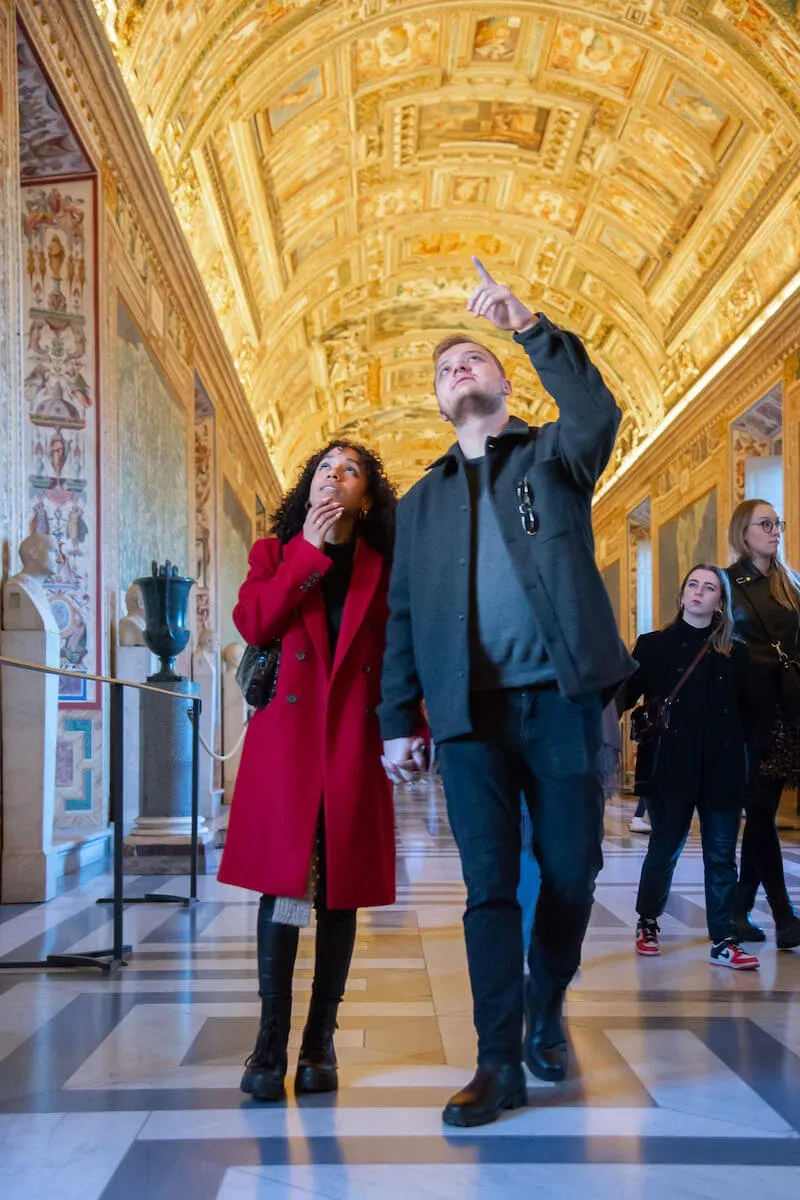
People made a pilgrimage from all over the world to visit the spiritual home of Catholicism. Unfortunately, this means that getting into the Vatican is by no means easy. With our priority entrance, you’ll be able to skip the hours of waiting in line and walk right into one of the most historically rich places in the world.
Your private tour starts with the Vatican Museums. Don’t be overwhelmed by the never-ending rooms or twisting corridors – we’ll guide you through some of the thousands of rooms without missing their deepest secrets. Our route includes the Hall of Maps, the Gallery of Tapestries, the Gallery of Candelabra, The Raphael Rooms and much more. Your friendly expert guide will be happy to answer any questions you might have.
After our trip through the museums, you’ll make your way into the Sistine Chapel, one of the most fabled historical sites in the world. The Sistine Chapel houses the timeless masterpiece crafted by none other than Michelangelo himself. Marvel at the Last Judgement in all its glory.
The pace of this private tour is comfortable and can be adapted to suit you. It also includes all ticket prices for the areas that we’ll be visiting during our trip. Book your spot now to make sure you don’t miss out on the chance to visit one of the most sacred spaces on Earth!
